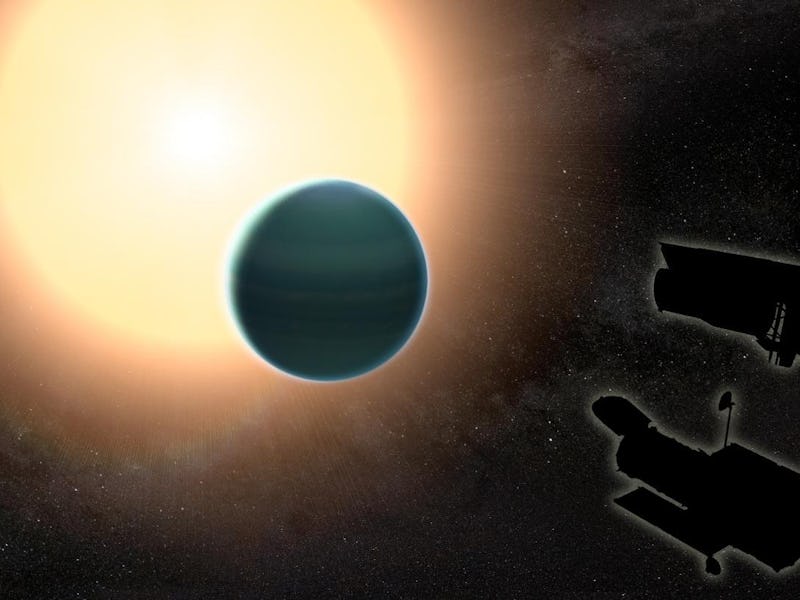Discovery of "Warm Neptune" Challenges Theories on Planet Births

Around 437 light-years away lies the mysterious exoplanet HAT-P-26b — which is a terrible name, but blessedly it’s also known as “Warm Neptune.” Scientists discovered the planet in 2010, but have just now uncovered information about its composition that could totally reshape how we think about the births and deaths of planets.
“Warm Neptune” is roughly the same mass as Neptune and Uranus, so scientists expected there to be many similarities between the planets. However, a new study conducted using NASA’s Hubble and Spitzer telescopes found an atmosphere made of unexpectedly light elements: mostly helium and hydrogen. The atmosphere also contains water signatures and scarcely any clouds.
The findings indicate that the planet’s formation probably happened differently than that of Neptune or Uranus, both of which have atmospheres that are rich in heavy elements. Scientists think that our “ice giants” formed near the edge of a giant ring of debris that whirled around the new sun. Being out on the fringe, Neptune and Uranus were hit with the icy, heavier parts of the debris — planets like Saturn and Jupiter got the warmer stuff — which then became part of their atmospheres.
An artist imagines the atmosphere of HAT-P-26b, or "Warm Neptune."
So if “Warm Neptune” doesn’t have those heavy elements, how did it form? The planet may have developed closer to its host star than Neptune and Uranus were to the sun. Alternatively, it could have formed later in the creation of its planetary system than our planets did in the development of the solar system. Or both possibilities could be true.
“This measurement is the first hint that giant planets may not all form the way the ones in our solar system did,” the lead author of the study, Hannah Wakeford, tells Inverse. She says that it’s not yet clear whether the anomaly is “Warm Neptune” or the planets in our solar system; extensive further research is needed.
“The big question we are trying to answer here is: How easy or hard is it to make a solar system like our own?” Wakeford explains. “This question has important implications for planet formation theories and how our planets evolved.”